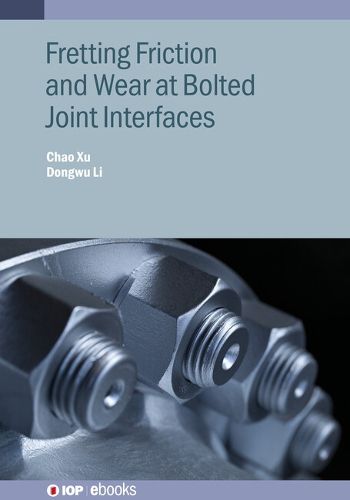Readings Newsletter
Become a Readings Member to make your shopping experience even easier.
Sign in or sign up for free!
You’re not far away from qualifying for FREE standard shipping within Australia
You’ve qualified for FREE standard shipping within Australia
The cart is loading…






This title is printed to order. This book may have been self-published. If so, we cannot guarantee the quality of the content. In the main most books will have gone through the editing process however some may not. We therefore suggest that you be aware of this before ordering this book. If in doubt check either the author or publisher’s details as we are unable to accept any returns unless they are faulty. Please contact us if you have any questions.
This book introduces the latest research on friction and wear at bolted joint interfaces and explores the interface mechanics behaviour and modelling methods of bolted joints. It involves many branches of mechanical engineering, including contact mechanics, dynamics, tribology, experimentation, modelling and numerical simulation. The book helps readers to deepen their understanding of friction and wear at bolted joint interfaces through experimental tests and in-depth theoretical analysis, based on the latest research and developments in the field.
The book has potential guiding significance in the design of bolted connection structures, bolt anti-loosening design, and health monitoring of jointed structures. It also offers a generalised interface modelling approach to predict friction and wear-induced nonlinear dissipation and stiffness, which can also be integrated into commercial finite element software.
Key Features:
Introduces the latest research on friction and wear at bolted joint interfaces Explores the interface mechanics behaviour and modelling methods of bolted joints Includes experimental tests, in-depth theoretical analysis, case studies and application examples Offers a generalised interface modelling approach to predict friction and wear-induced nonlinear dissipation and stiffness, which can also be integrated into commercial finite element software Involves many branches of mechanical engineering, including contact mechanics, dynamics, tribology, experimentation, modelling and numerical simulation
$9.00 standard shipping within Australia
FREE standard shipping within Australia for orders over $100.00
Express & International shipping calculated at checkout
This title is printed to order. This book may have been self-published. If so, we cannot guarantee the quality of the content. In the main most books will have gone through the editing process however some may not. We therefore suggest that you be aware of this before ordering this book. If in doubt check either the author or publisher’s details as we are unable to accept any returns unless they are faulty. Please contact us if you have any questions.
This book introduces the latest research on friction and wear at bolted joint interfaces and explores the interface mechanics behaviour and modelling methods of bolted joints. It involves many branches of mechanical engineering, including contact mechanics, dynamics, tribology, experimentation, modelling and numerical simulation. The book helps readers to deepen their understanding of friction and wear at bolted joint interfaces through experimental tests and in-depth theoretical analysis, based on the latest research and developments in the field.
The book has potential guiding significance in the design of bolted connection structures, bolt anti-loosening design, and health monitoring of jointed structures. It also offers a generalised interface modelling approach to predict friction and wear-induced nonlinear dissipation and stiffness, which can also be integrated into commercial finite element software.
Key Features:
Introduces the latest research on friction and wear at bolted joint interfaces Explores the interface mechanics behaviour and modelling methods of bolted joints Includes experimental tests, in-depth theoretical analysis, case studies and application examples Offers a generalised interface modelling approach to predict friction and wear-induced nonlinear dissipation and stiffness, which can also be integrated into commercial finite element software Involves many branches of mechanical engineering, including contact mechanics, dynamics, tribology, experimentation, modelling and numerical simulation